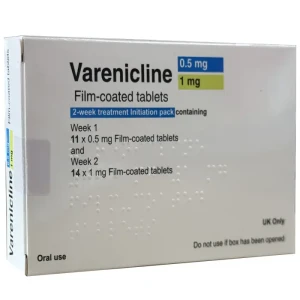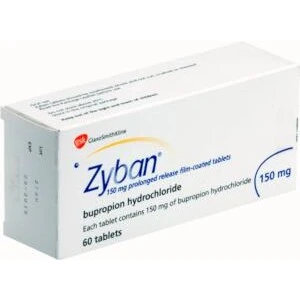The Quit Smoking Timeline Explained
Quitting smoking is one of the most important things you can do for your health, but it can often be a complicated process that requires time and dedication. The question is, just how does it all work?
Join us as we explore the quit smoking timeline, outlining the various stages of stopping smoking and providing an explanation of what you may experience from the very moment you give up cigarettes, right up to several years in the future.
This article will also discuss the various stop smoking medications that are available, and outline how we can provide the essential support required to help you kick the habit for good. Read on to find out more.
START YOUR STOP-SMOKING CONSULTATION TODAY
Reasons to Stop Smoking
There are no benefits to smoking, and ending the habit is one of the best things you can do for your health. Smoking causes widespread harm to almost every organ in the body, increasing your risk of many serious diseases and an early death.
Quitting smoking is tough, but it may buy you better health and a longer life by reducing your risk of:
- Cardiovascular disease
- Chronic obstructive pulmonary disease (COPD)
- Other respiratory infections, such as bronchitis and pneumonia
- Several types of cancer
- Stroke
- Pregnancy complications
Indeed, reducing your risk of long-term health problems by quitting smoking can add as much as 10 years to your life expectancy.
Other benefits of quitting include:
- Removing the financial burden of smoking
- Improved sense of taste and smell
- Improved energy levels
- Better mental health
- Reducing the risk of secondhand smoke to those around you

How Long Does it Take to Stop Smoking?
Everyone’s journey to a smoke-free life is unique, and there’s no set timeline for how long it takes to quit smoking. Nicotine withdrawal symptoms can begin within hours of your last cigarette, and are often strongest in the first week of a quit attempt. Withdrawal symptoms last 3 to 4 weeks on average, though some people experience them for longer.
Even after the initial symptoms of nicotine withdrawal have abated, people who quit may still feel the occasional strong urge to smoke. Therefore, it’s important to have a plan for how to handle cravings, such as reminding yourself why you wanted to quit in the first place.
Many other factors can affect a person’s success when quitting smoking. These include:
- Motivation: Awareness of the health risks of smoking, or having smoking-related health problems, can increase a person’s motivation to quit and, therefore, their likelihood of success.
- Previous Attempts: People who have tried to quit smoking in the past are more likely to succeed with each new attempt.
- Quitting Date: People who decide to quit smoking immediately are more likely to succeed than those who set a future quitting date.
Quitting smoking is a challenge, but the potential rewards are huge, and 95% of people see positive changes in their health soon after quitting.
Varenicline Smoking Cessation
- Reduces cravings & withdrawal symptoms
- Blocks the rewarding effect of smoking
- Higher long-term quit rates
4 Stages of Stopping Smoking
The Stages of Change Model (also known as the Transtheoretical Model) describes five main stages of smoking cessation. These are:
- Precontemplation
- Deliberation
- Preparation
- Execution
- Maintenance
Let’s explore the stages of stopping smoking in more detail.
1. Precontemplation
In the precontemplation stage, a person has no intention of quitting smoking, but may feel pressured to do so. They don’t believe that smoking is causing a problem and feel reluctant to change the habits they have formed.
2. Deliberation
Also known as the ‘contemplation’ stage, individuals at this point acknowledge that smoking is a problem. One clinical study defined people at the deliberation stage as those who are thinking about quitting within the next six months.
The deliberation stage is also when people start seeking advice from friends and family. They may even begin thinking up potential roadblocks along the quit smoking timeline and how they might overcome them.
3. Preparation
At this stage, the person is aware that they need to stop smoking and intends to quit someday. They may begin identifying potential obstacles to quitting and asking friends and family for advice. However, they haven’t yet stopped smoking.
According to the Korean study mentioned above, people in the preparation stage intend to quit within the next 30 days and have already made one attempt to stop smoking within the past year.
4. Execution
The person puts their plans into action and stops smoking. During this stage, the person is usually navigating nicotine withdrawal symptoms and cravings. At this time, seeking support and focusing on relapse prevention (e.g., by reinforcing their reasons to quit) are key to success.
5. Maintenance
A person in the maintenance stage has not smoked for at least 6 months. Unfortunately, relapse is common, and 75% of people who quit smoking will slip up and smoke again. Therefore, continued focus on the positive aspects of quitting is critical for long-term success.
Cytisine
- Natural origin
- Reduces cravings and withdrawal symptoms
- Short, structured treatment course
The Stop Smoking Timeline
A large majority of people who quit smoking notice benefits after around 2 weeks. In reality, the health improvements start almost immediately, and the body begins to recover within hours of your last cigarette.
Here, we explore all the stages of the quit smoking timeline, so you have a good idea of what to expect:
20 Minutes
Nicotine increases your heart rate. After 20 minutes of not smoking, your heart rate returns to normal and your pulse resumes its normal rhythm.
8 Hours
Tobacco smoke contains a poisonous gas called carbon monoxide, which binds to haemoglobin and reduces the amount of oxygen your blood can carry. Within 8 hours of quitting, carbon monoxide levels decrease by half, and oxygen levels begin to return to normal.
24 Hours
After 24 hours of not smoking, the nicotine level in the blood drops to zero. Many people experience powerful urges to smoke at this stage of the quitting process.
48 Hours
Carbon monoxide levels drop to those of a non-smoker. You may cough a lot at this stage as your lungs begin to clear excess mucus. You may notice an improvement in your sense of smell and taste.
72 Hours
The bronchial tubes start to relax, and breathing gets easier. You may also notice you have more energy than usual.
2-12 Weeks
Your circulation and lung function improve over the 2-12 weeks after you quit smoking. Most people feel healthier and more energetic, and you may notice improvements in your ability to exercise.
3-9 Months
Within 3-6 months of quitting smoking, lung function can improve by up to 10%. Coughs, wheezing, and breathing problems have often improved by this point.
1 Year
Smoking puts a lot of strain on the cardiovascular system and is a major cause of heart disease. After 1 year of not smoking, your risk of a heart attack will have halved compared to if you had continued smoking.
10-20 Years
10-20 years after you quit smoking, your risk of lung cancer will have halved compared to that of a smoker.
Zyban
- Suppresses cravings & withdrawal symptoms
- Nicotine-free
- May improve mood during quitting
What Stop Smoking Treatments Are Available?
Nicotine is a highly addictive substance, and quitting is hard. Fortunately, there are many smoking cessation tools that can help you on your journey. These include NRT (nicotine replacement therapy) tools, and prescription anti-smoking medications, such as:
- Varenicline: The generic form of Champix, Varenicline, acts on the brain’s nicotine receptors to reduce tobacco cravings and withdrawal symptoms.
- Zyban: Also known as bupropion, Zyban is an antidepressant that can also help people to quit smoking. It works by influencing neurotransmitters in the brain to reduce nicotine cravings and withdrawal symptoms.
- Cytisine: A natural medicine derived from laburnum seeds. Cytisine reduces cravings and withdrawal by limiting the dopamine high associated with smoking.
Quit Smoking Timeline: Frequently Asked Questions
Quitting smoking is rarely a linear process, and it often takes more than one attempt. Arming yourself with as much information as possible can increase your chances of success; therefore, we’ll address some of the most common questions people have about the quit smoking timeline.
How to Prepare to Quit Smoking
You can prepare yourself for success in your quit attempt by setting a firm quit date and identifying your personal smoking triggers. Think about how you will avoid these triggers, and plan coping strategies to help you navigate cravings and withdrawal symptoms should they arise.
You can also increase your chances of quitting smoking by seeking the support of friends, family, and professionals. A licensed clinician can advise you about other smoking cessation tools, such as cognitive behavioural therapy (CBT) and prescription anti-smoking medicines.

When Do Cravings Stop After Quitting Smoking?
Nicotine cravings often improve within a few weeks of quitting smoking and further reduce with time, but don’t go away altogether. You will need robust coping strategies to avoid relapsing, such as:
- Using nicotine replacement therapy
- Avoiding smoking triggers
- Distracting yourself when cravings occur
- Using physical activity to reduce cravings
- Reaching out to your support system
- Reminding yourself of your reasons to quit smoking
How to Set a Quit Smoking Date?
Setting a quit date is your first step to a smoke-free life. Once you’ve decided to quit, select a date within the next week or two when there are no stressful events scheduled. Avoid dates that coincide with situations that you know will trigger an urge to smoke.
Once you have your quit date in mind, start preparing yourself to enact your plan. Speak to a healthcare professional about anti-smoking aids and identify other coping mechanisms to help you navigate cravings and withdrawal symptoms.

How Long After Quitting Smoking Does Health Improve?
Your health will start to improve almost immediately after you quit smoking, and your heart rate will return to normal within 20 minutes of your last cigarette. Your body will begin to recover over the following days, weeks, and months, and almost all ex-smokers feel better just two weeks after smoking cessation.
The benefits people usually notice first after quitting smoking are higher energy levels, easier breathing, improvements in sense of taste and smell, and generally feeling healthier.
Smoking Cessation Support You Can Rely Upon
Deciding to give up smoking is an important milestone in anyone’s life, but doing so can require hard work and real determination. The good news is that you don’t have to do any of it alone, as Prescription Doctor is here to help.
We’ll support you at every stage of the quit smoking timeline, from providing effective cessation medication to regularly checking in with you to monitor progress and offer guidance. Our service is tailored to your specific needs and circumstances.
Our website also features a library of essential resources, including a comparison of potential stop-smoking aids, advice for social smokers, and information on what happens to your body when you quit. We have everything you need to keep you on track.
Ready to break the habit? Start your stop-smoking consultation with Prescription Doctor today.
Sources
- PubMed (2006): The Stages of Change in Smoking Cessation in a Representative Sample of Korean Adult Smokers.
- CDC (2024): Cigarette Smoking.
- CDC (2024): Benefits of Quitting Smoking.
- NHS: Benefits of quitting smoking.
- NHS: Managing nicotine withdrawal symptoms.
- UK Government (2023): 95% of ex-smokers see positive changes soon after quitting.
- American Family Physician (2002): Smoking Cessation: Integration of Behavioral and Drug Therapies.
- Cleveland Clinic Abu Dhabi: Quitting Smoking.
- NHS: Quit smoking.
- PubMed (2020): Cardiovascular, carcinogenic and reproductive effects of nicotine exposure: A narrative review of the scientific literature.
- UK Government (2022): Carbon monoxide: general information.
- World Health Organization (2020): Tobacco: Health benefits of smoking cessation.
- CDC (2024): Health Effects of Cigarettes: Cardiovascular Disease.
- Mayo Clinic: Quitting smoking: 10 ways to resist tobacco cravings.
- Smokefree.gov: Prepare to Quit.
Authored By

Kate Latham
Medical Content WriterPublished on: 03/10/2025
Reviewed By

Mohamed Imran Lakhi
MPharm - Lead PharmacistReviewed on: 03/10/2025
© 2013 - 2025 Al Muhsineen Limited. All Rights Reserved. Registered Pharmacy: 34 Halliwell Road, Bolton BL1 8RL. Registered Office: 254 First Floor, Shearbrow, Blackburn, England, BB1 8DS









